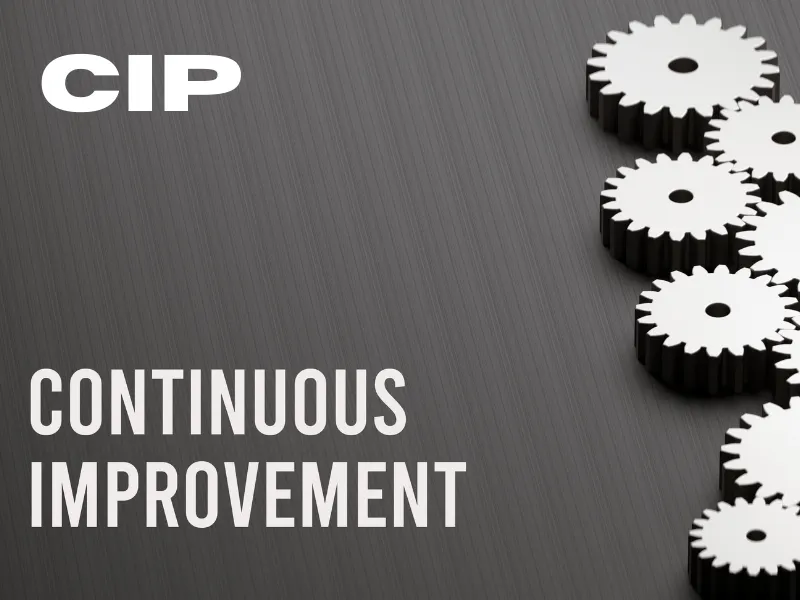Kaizen Principles | Part of Daily Life
Technology has made such a big impact on our daily lives. One example of how it impacts us is the change in the work place environment. With so many people working remotely and now, even virtually, we’re seeing less and fewer people at their desks. This has led to a more flexible and comfortable work environment. As technology increasingly becomes an ever-present part of our lives, we can expect that there will be more changes in how we do things at home and at work. There was change in the workplace yesterday, there is change today, and there will be change tomorrow. Some kind of improvement is made somewhere in the company every day. Employees expect and accept it as part of the everyday routine and quality control.
Emphasizing Long Term Planning
Short term profits do not insure a company’s survival.
Kaizen Principles takes a long — term approach of investing in a relationship with the customer, and it’s reputation in the marketplace (Performance Management). It is these relationships that are the ultimate assurance of business survival. The key to this success lies in the ability to consistently deliver quality products, services and solutions at competitive prices while maintaining an excellent level of service with the lean management framework. This requires continuous improvement and elimination of waste through innovation and creativity as well as effective management systems and value-adding activities.

Begin your incremental improvement by ensuring consistency throughout the entire operation.
4) Be open to suggestions. Encourage everyone to offer a wide range of suggestions. You might find something useful that improves the value and quality of products.
5) Do not hesitate to ask questions. People who know the answers usually volunteer them. Others often have valuable insights into problems.
6) Use data to drive decision-making. Data analysis provides information needed to make informed choices.
7) Take advantage of opportunities. Opportunities exist everywhere in an organization. They must be identified and acted upon quickly.
Customer Driven
All products and incremental improvements should ultimately be aimed at increasing customers’ satisfaction. Satisfied customers are like homing pigeons; they always return home, and as long as they do, the business goes on. When developing a product, process or service, you should always consider whether it is going to be beneficial for your customers. As a business owner, it is essential that you keep in mind the needs and wants of your customers when making any decisions about how to improve your product or service. If you are not considering what will be best for your customers, then you are probably wasting time and resources. It is important that you focus on the end goal — the customer.

Respect for people and their opinions is also very important. Customers want to feel valued and appreciated. In order to achieve this, you need to listen carefully to what they say and act accordingly. Your employees may think differently from others but if you treat all equally, you’ll get better results with a systematic method.
The Customer Is Always Right!
A customer’s opinion counts just as much as anyone else’s. A satisfied customer is worth ten times their money. They are loyal and will tell other people about you. So don’t take them for granted. Listen to them. Don’t assume anything. Ask them why they like you. Why does he or she buy them from you? What would they like to see improved? How could you serve them better? These are some of the most common questions asked by businesses looking to increase sales. But before asking those questions, it helps to understand what makes someone choose one particular brand over another.

To answer this question, let’s look at two different types of customers: regular buyers and new ones.
Regular Buyers
Purchase goods because they believe in the product itself. They trust its reliability and performance. They use it regularly and therefore become familiar with it. Their experience allows them to identify potential flaws and defects which they report back to the manufacturer.
New Buyers
Purchase goods because they haven’t used them yet. They don’t really know what they are buying. They simply pick up whatever looks good without knowing exactly what they’re getting.
The following principles can help you know your buyers:
1) Know Your Market- Find out who your customers are and where they live. This means knowing not only where they shop but also what kind of products they need. For example, if you sell shoes, find out which stores carry your product line. If you’re selling clothes, look at catalogs and ask friends and family members what type of clothing they wear. Once you have this information, you’ll be able to target your marketing efforts more effectively. You may want to advertise on television during sports events so that consumers watching football games will notice your ads. Or maybe you should focus on women with children because they tend to spend more time shopping than men.
2) Understand Their Needs- When you learn something new about your market, use it to improve your business. Maybe there’s an opportunity to offer free shipping on all orders placed after 5pm. Perhaps you can start advertising during daytime TV shows when families watch together. Whatever you come up with, try it out and measure its effectiveness. Then adjust accordingly.
3) Be Consistent- People respond best to things that happen regularly. Offer discounts every week. Send coupons once a month. Make sure everyone knows about these promotions. And keep doing it until they stop working.
4) Keep Them Coming Back- Give away samples. Have contests.
Open to Suggestion
Kaizen encourages employees to suggest alternate approaches (value added activities). A suggestion box is standard and an award system for good suggestions is recommended. With input from all levels of an organization — from the top down — the ideas will be plentiful and thoughtful. The process may seem like a lot of work at first. But, in time, it becomes second nature. And, when you see how much better your business can become with just one small change, you’ll wonder why you didn’t do this sooner!

The following are some basic principles that should guide kaizen:
1) Focus on Customer Needs — Understand what customers want from their suppliers and how they can be best served by them.
2) Make changes only if they improve performance or reduce costs. If there’s no improvement, don’t make any changes.
3) Keep things simple. Don’t complicate matters by adding new processes or procedures.




